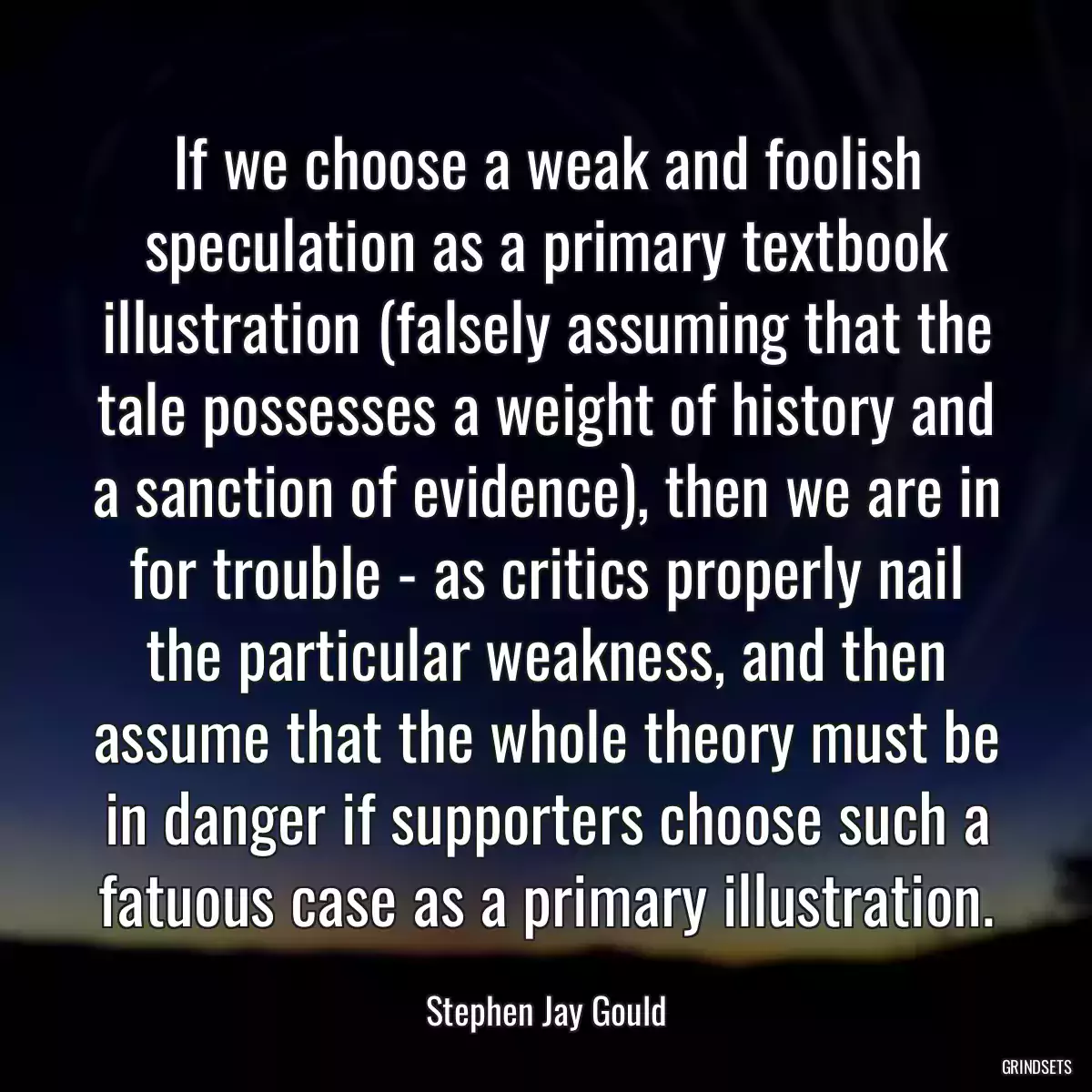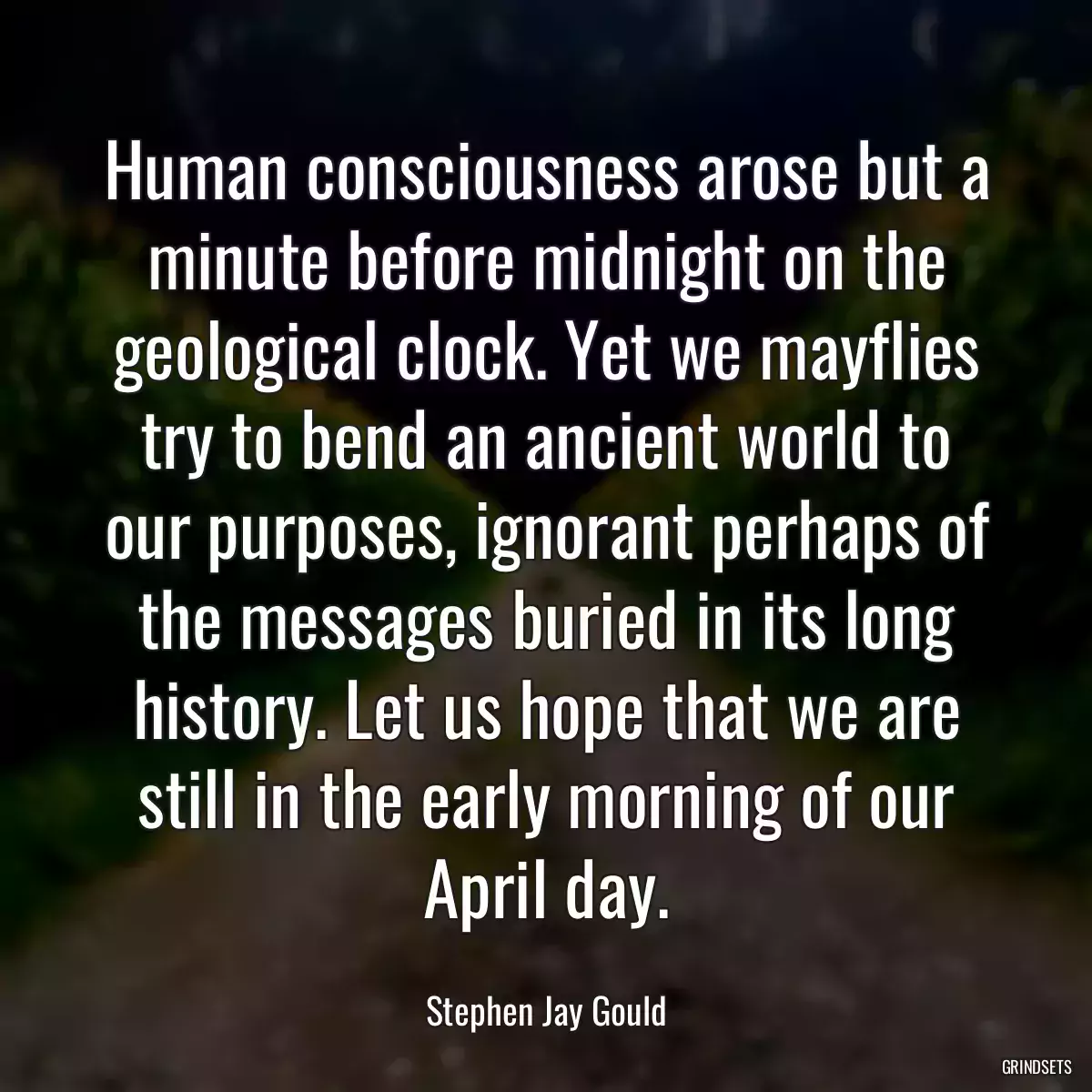
If we choose a weak and foolish speculation as a primary textbook illustration (falsely assuming that the tale possesses a weight of history and a sanction of evidence), then we are in for trouble - as critics properly nail the particular weakness, and then assume that the whole theory must be in danger if supporters choose such a fatuous case as a primary illustration.
